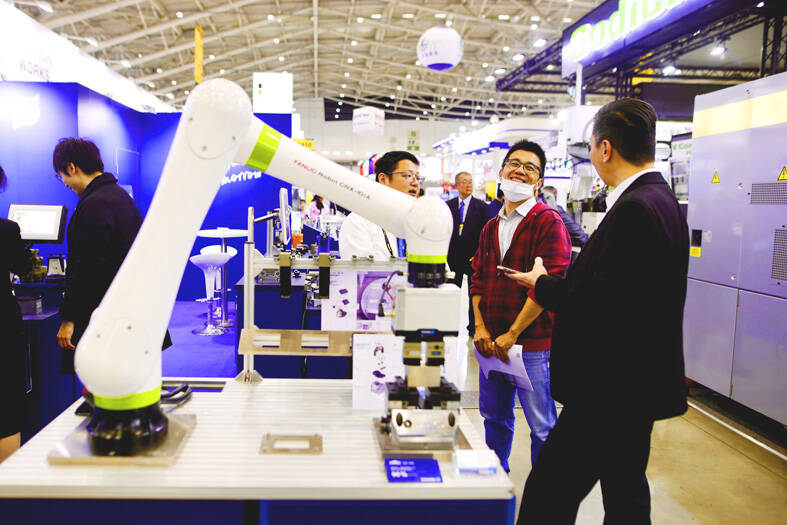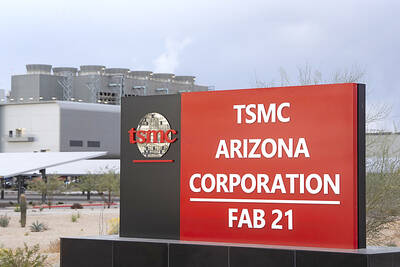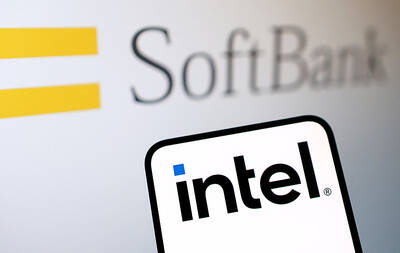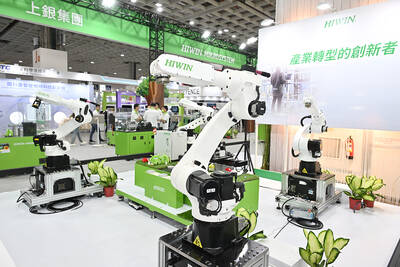Machinery’s share of Taiwan’s total exports slid to a record low of 5.1 percent last year due to Chinese dumping in the international market, the Ministry of Finance said in a report yesterday.
China’s decision to end preferential tariffs for Taiwanese machinery and the continued economic downturn in Europe also contributed to the lower exports last year, the report said.
Machinery exports edged down 0.4 percent year-on-year to US$24.1 billion last year, the lowest level since 2021, when the figure stood at US$27.8 billion, data compiled by the ministry showed.

Photo: Ritchie B. Tongo, EPA-EFE
Still, machinery was the fourth-largest export category, after electronics components’ 37.3 percent, information, communications and audi-?video products’ 27.9 percent and base metals’ 6 percent, the data showed.
Machinery’s share of Taiwan’s total exports has steadily declined from a high of 8.5 percent in the 2000s, the report said.
In contrast, outbound shipments of electronics and information and communications technology products have expanded rapidly over the past two decades, underlying a shift in the nation’s industrial structure.
Machinery exports in the first half of this year grew 4.3 percent annually to US$12.1 billion, the ministry said.
The outlook for the sector remains uncertain due to continuing US-China trade tensions and geopolitical conflicts, resulting in delays in infrastructure and reconstruction projects, it said.
China, including Hong Kong, was once the largest buyer of Taiwanese machinery, accounting for about 30 percent of the nation’s total exports, the report said.
However, as China ramped up efforts to develop a homegrown machinery industry and promoted import substitution, Taiwan saw an across-the-board retreat in machinery exports to that country in recent years, except for those making ball bearings, transmission shafts and for semiconductor production, it said.
From 2019 to last year, total machinery shipments to China, including Hong Kong, dropped 16.8 percent in terms of value, ministry data showed.
China’s share of Taiwan’s total machinery exports also slid from 29.3 percent to 23.7 percent during the same period, the data showed.
Meanwhile, due to the US-China rivalry and Washington’s efforts to bring back manufacturing to the US, Taiwan’s machinery exports to the US increased 24.5 percent over the past five years in terms of value, while US share of Taiwanese exports rose to 24.2 percent, from 19.9 percent, surpassing China for the first time.
In addition, exports of machines for semiconductor manufacturing increased significantly in the past few years, the report said, citing robust demand in the semiconductor industry chain and the continuous improvement of domestic manufacturing technology for related equipment.
From 2013 to 2022, the export value of such machines hit fresh records for 10 consecutive years and exceeded the US$5 billion mark for the first time in 2022.
Semiconductor machines’ share of total machinery exports also climbed from 6.4 percent to 17.8 percent during the period, and reached 20.5 percent last year, portending potential growth momentum for Taiwan’s machinery manufacturers going forward, the report said.
China used to be the largest buyer of Taiwanese semiconductor machines, accounting for 55.5 percent of Tawan’s total exports in 2017, but the figure dropped below 30 percent in the past two years, the report said.
ASEAN members, especially Singapore, have accounted for more than 20 percent after growing investment in the region under companies’ “China Plus One” investment strategy, while Europe, led by the Netherlands, and the US accounted for more than 10 percent each of the nation’s total exports, it added.

Taiwan Semiconductor Manufacturing Co (TSMC, 台積電), the world’s biggest contract chipmaker, booked its first-ever profit from its Arizona subsidiary in the first half of this year, four years after operations began, a company financial statement showed. Wholly owned by TSMC, the Arizona unit contributed NT$4.52 billion (US$150.1 million) in net profit, compared with a loss of NT$4.34 billion a year earlier, the statement showed. The company attributed the turnaround to strong market demand and high factory utilization. The Arizona unit counts Apple Inc, Nvidia Corp and Advanced Micro Devices Inc among its major customers. The firm’s first fab in Arizona began high-volume production

VOTE OF CONFIDENCE: The Japanese company is adding Intel to an investment portfolio that includes artificial intelligence linchpins Nvidia Corp and TSMC Softbank Group Corp agreed to buy US$2 billion of Intel Corp stock, a surprise deal to shore up a struggling US name while boosting its own chip ambitions. The Japanese company, which is adding Intel to an investment portfolio that includes artificial intelligence (AI) linchpins Nvidia Corp and Taiwan Semiconductor Manufacturing Co (TSMC, 台積電), is to pay US$23 a share — a small discount to Intel’s last close. Shares of the US chipmaker, which would issue new stock to Softbank, surged more than 5 percent in after-hours trading. Softbank’s stock fell as much as 5.4 percent on Tuesday in Tokyo, its

COLLABORATION: Softbank would supply manufacturing gear to the factory, and a joint venture would make AI data center equipment, Young Liu said Hon Hai Precision Industry Co (鴻海精密) would operate a US factory owned by Softbank Group Corp, setting up what is in the running to be the first manufacturing site in the Japanese company’s US$500 billion Stargate venture with OpenAI and Oracle Corp. Softbank is acquiring Hon Hai’s electric-vehicle plant in Ohio, but the Taiwanese company would continue to run the complex after turning it into an artificial intelligence (AI) server production plant, Hon Hai chairman Young Liu (劉揚偉) said yesterday. Softbank would supply manufacturing gear to the factory, and a joint venture between the two companies would make AI data

The Taiwan Automation Intelligence and Robot Show, which is to be held from Wednesday to Saturday at the Taipei Nangang Exhibition Center, would showcase the latest in artificial intelligence (AI)-driven robotics and automation technologies, the organizer said yesterday. The event would highlight applications in smart manufacturing, as well as information and communications technology, the Taiwan Automation Intelligence and Robotics Association said. More than 1,000 companies are to display innovations in semiconductors, electromechanics, industrial automation and intelligent manufacturing, it said in a news release. Visitors can explore automated guided vehicles, 3D machine vision systems and AI-powered applications at the show, along